

- Call 908 543 4390
- Email
- Dr.Joni Redlich PT,DPT


Every child is unique, and so are their sensory experiences.
For some children, the world can be an overwhelming place due to a condition known as Sensory Processing Disorder.
As parents, caregivers, and educators, it’s our responsibility to provide the support and understanding these children need to thrive.
In this guide, you can learn about Sensory Processing Disorder and explore effective strategies to help children with Sensory Processing Disorder not just cope, but thrive in the sensory-rich world we live in.
Sensory Processing Disorder is a neurodevelopmental condition that affects the way the brain processes and responds to sensory information.
Sensory experiences are a fundamental part of our daily lives, encompassing everything from the taste of food to the feel of clothing against our skin and the sounds of the environment.
However, for children with Sensory Processing Disorder, these sensory inputs can become overwhelming or distorted, leading to stress, frustration and meltdowns in their daily lives.
A Sensory Processing Disorder can manifest in various ways, including:
Your child may be hypersensitive to sensory stimuli.
And this can mean that they may react strongly to even mild sensations, such as certain textures, bright lights, or loud noises.
For you, and your child, this can make it really difficult when going into new environments, which are outside of your control, and lead to fear, anxiety, or tantrums.
In contrast, your child may be hyposensitive, meaning they have a reduced awareness of sensory stimuli.
They may seem oblivious to temperature changes, physical pain, or even their surroundings.
And while this may seem less of a challenging situation it can lead to harmful consequences – they don’t realize how cold it is when they’re playing out, or don’t realize they’ve injured themselves when playing on their bike.
Another way Sensory Processing Disorder can impact your child’s life is that they are more likely to seek out sensory experiences than others.
So when they’re being shouted at, and told to sit still at their desk in class, their instincts are desperate for stimulation which means they are fidgeting, or seem like they can’t sit still.
For your child, this is very hard to understand because they are craving stimulation, yet being punished and feel bad for seeking it.
It’s easy to see why children with sensory disorders can lose their confidence and self-esteem.
Is your child struggling to tell the difference between different textures, tastes, or sounds?
This could be another way that a sensory processing disorder is impacting their life, and often can be seen in kids who are labeled “fussy eaters”.
Often, kids prefer to stick to bland or neutral-flavored foods because they can’t differentiate different tastes and prefer to stick to the familiar and safe options – especially when their confidence is low or they are feeling anxious.
Living with a Sensory Processing Disorder can be emotionally challenging for not just your child, but also your family.
But it’s important to recognize that their frustration, anger, and behavior are their way to navigating through a world that is very different to that, you and I go through.
Their emotions are valid.
And a natural response to their unique sensory experience.
Importantly, your child isn’t broken, and doesn’t need fixing, despite what you made be made to feel by people who don’t understand.
However, while your child doesn’t need fixing, you can help them to cope, and thrive throughout their life with the right support.
Seek Guidance From Experts
Start by consulting with a pediatrician or occupational therapist who specializes in sensory processing issues. The team at our specialist clinic in New Jersey can give you an accurate diagnosis, and provide you and your child with the specialized and personalized support they need.
You can find out more about this in a Free Sensory Processing Screening by clicking HERE or calling us on (908) 543 4390.
Create a Sensory-Friendly Environment
You know your child better than anyone, so make adjustments to your child’s surroundings to reduce their sensory triggers.
This might include using soft lighting, noise-canceling headphones, or providing sensory-friendly tools like fidget toys.
Celebrate Small Victories
For children with special needs, life can be a very demoralizing place.
What is easy for other kids in their class, is incredibly difficult for them – through no fault of their own.
So when they do achieve something, no matter how small, make sure to celebrate.
Building their self-esteem and confidence is essential to their overall well-being.
Establish a Sensory Diet
Work with a therapist to develop a sensory diet tailored to your child’s needs.
This involves incorporating sensory activities into their daily routine to help them build their confidence, and regulate their sensory experiences with things that can be challenging for them.
One important thing is to not make the experience stressful for them, and if they are struggling, to move to something that they are stronger at doing.
Your child will develop much faster if you make it fun, and get them engaged rather than pushing them to do things they aren’t capable of doing.
Advocate for Your Child
Another way to help is to advocate for your child at school and in social settings.
Try to work closely with educators and therapists to ensure they receive appropriate accommodations and support.
Empathy and Patience
Understand that your child’s reactions are not intentional.
Be patient, empathetic, and validate their feelings.
And when they do have tantrums, provide a safe space for them to express themselves.
I know it can be very difficult, especially out in public with lots of strangers watching and judging, but do your best to keep calm and help them through their experience.
Education and Awareness
Educate yourself, your child’s teachers, and caregivers about your child’s Sensory Processing Disorder.
The more people understand your child’s needs, the better they can provide support.
And with the right support, your child can start to regulate their response to sensations that used to trigger them much better, or have plans in place to reduce the impact.
If you’re recognizing the behaviors in your child in this blog, even to a small degree that hasn’t led to an official diagnosis, we can help you get a much deeper understanding of the condition and the best ways to help your child move forward.
We appreciate that you are worried for your child.
How they cope in school.
How they interact with other kids in the neighborhood or at the park.
And what their future will look like.
But one way to begin to relieve your anxiety over this is to learn more.
And speaking to our experts for FREE is something we would invite you to do.
Right now, demand at our New Jersey clinic is very high, and we only have a limited number of spaces available for our Free Sensory Processing Screenings.
This appointment gives you 1-1 time with a leading expert, at our popular clinic, and allows you to share your story, get answers, and find out proven ways to support your child.
Call us now on (908) 543 4390 or click HERE to book yours.
Read our blog – Sensory Processing Disorders – Getting To The Core Of It
Read our blog – Top Tips For Sensory Savvy Parents
On social media? Then Like Our Facebook Page or Follow Us On Instagram for more helpful tips and advice.
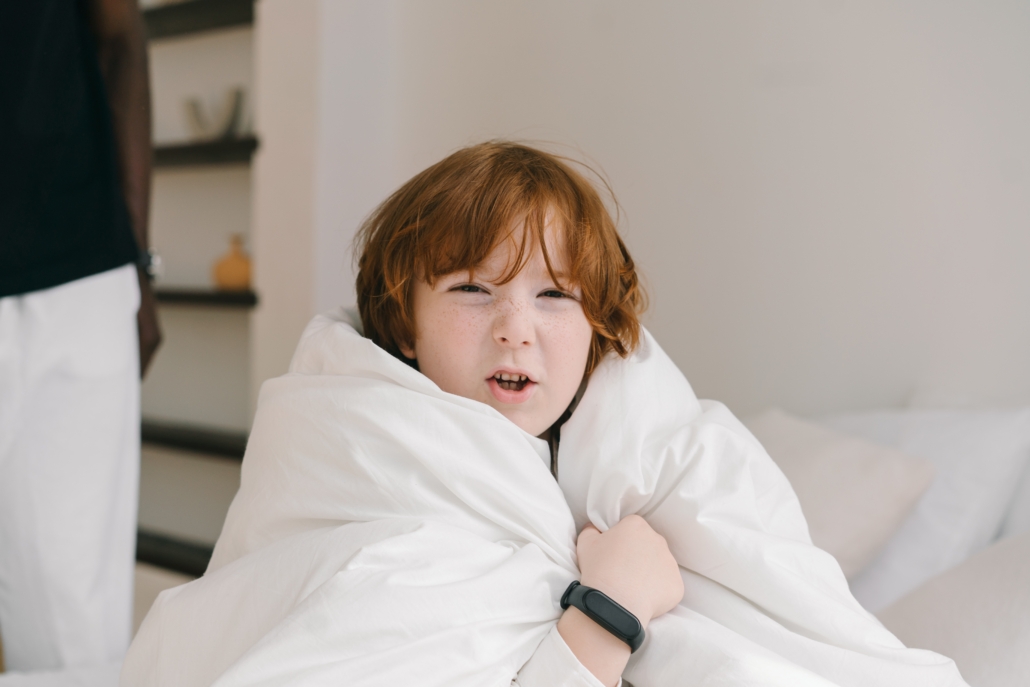
“He will only wear the same outfit EVERY SINGLE DAY!”
“The second he comes home from school he takes all of his clothes off!”
“She refuses to wear socks! What do I do now that summer is over?”
These are things we hear everyday from parents calling us at Kid PT to ask for help. There are many strategies our Occupational Therapists have to guide you and your child through these challenges, but one step can be to find clothing that is more tolerable to our children who are more sensory sensitive.
Choosing the right clothing for autistic children can greatly impact their comfort and confidence as they head back to school. Sensory-friendly and adaptive clothing can make a significant difference. Here are 8 autism-friendly clothing brands that prioritize comfort and style for a successful back-to-school experience:
Tommy Hilfiger’s Adaptive line features clothing with hidden magnetic closures, adjustable features, and easy-to-use fastenings. These modifications promote independence while maintaining a trendy appearance.
SmartKnitKIDS specializes in seamless, irritation-free clothing that is perfect for children with sensory sensitivities. Their seamless socks, underwear, and tees minimize discomfort and sensory challenges.
Mabel’s Labels not only offers practical name labels but also a collection of sensory-friendly clothing. Their tagless shirts and adaptive features cater to children’s unique needs, reducing sensory triggers.
Target’s Cat & Jack Adaptive line combines style with functionality. Their sensory-friendly designs, adaptive closures, and soft materials provide children with autism a comfortable and fashionable back-to-school wardrobe.
Primary offers a range of clothing in solid colors without distracting logos or tags. These simple designs can be particularly appealing to children with sensory sensitivities, providing a hassle-free clothing option.
BILLY Footwear specializes in adaptive shoes with a unique zipper system that makes them easy to put on and take off. Their stylish and inclusive designs accommodate various needs.
ABLE2WEAR focuses on clothing that addresses specific mobility and sensory needs. From open-back tops to easy-to-dress pants, their adaptive options cater to a variety of challenges that children on the autism spectrum may face.
We know that the right clothing won’t solve all of the challenges in your daily routine, but it could make a big difference. These brands prioritize sensory comfort, functionality, and style, allowing students to confidently navigate their school day while feeling their best.
Have you tried any of these brands yet?
If so, please share your story. Let us know your likes and dislikes to help parents who are in similar shoes as you.
With kids returning to school soon, do you find yourself having sleepless nights worrying about how they’ll handle it?
And do you worry that they are going to fall behind their classmates further?
Lots of parents go through these emotions.
But it’s often much worse for parents of children with special needs.
And it can be a lonely time too.
Because as a parent of a child with special needs, it’s hard to find people who truly understand what you’re going through.
And that’s before we even consider how your kid is feeling…
Special needs children have to deal with the normal challenges every child faces in school, plus the additional challenges their conditions create.
Perhaps they struggle to concentrate in class, which means that they find it difficult to learn at the same pace as the other students.
Or they might have a hard time coping with the busy corridors, packed cafeterias, and hectic playgrounds.
And it can leave your child feeling isolated, getting upset, or unable to learn.
One reason that kids struggle for longer than they need to is our first myth…
This “wait and see” approach is incredibly frustrating for both parents and children because it’s so passive.
Even if your child will improve if left to their own devices, wouldn’t it be better to support them to accelerate their development, and help them become independent sooner?
For a lot of children with special needs, unless they get the right support, they will remain stuck.
Unable to progress.
And this is why the myth that your kid will grow out of it, or improve on their own is so harmful and misguided.
This is a damaging myth because alone, this won’t work for many children with special needs.
While it is great to have your child enjoy a sport, play with the neighbors’ kids, and get outdoors, it’s unlikely to be everything they need.
A child with special needs deserves special care, and a unique approach is where the real progress happens.
So if your child is struggling in school, forcing them to join a sports team or packing your calendar with playdates isn’t the answer.
The final myth is another frustrating one because it’s so unfair.
Most children are trying as hard as they can, using their all energy, and failing.
And over time this really wrecks their confidence and self-esteem.
I’ve heard so many stories about parents and teachers motivating children by giving them rewards and pushing them to try harder, and not seeing any progress.
But what you want to do instead is start to focus on what your child can do.
And working on their strengths, as opposed to focusing on their weaknesses.
When we do this in our clinic, progress is often surprisingly quick because we take an approach that your child hasn’t experienced before.
And this also helps to rebuild your kids’ confidence if they’ve spent years being told that they need to try harder.
At our specialist clinic, we have a proven track record of helping children with special needs and a team of leading experts to help your family.
But we appreciate parents want to find out more before deciding on visiting us.
That’s why we offer Free Telephone Consultations where you can speak to our friendly team and share your story.
From this point, we can give you personalized advice, and let you know about the best options available to support your child’s development.
So if you’re child is struggling in school or having tantrums on the way to school, we can help!
And because this is a telephone consultation, you can speak to us from the comfort of your own home!
What are you waiting for?
Simply click HERE to arrange your free telephone consultation now, or call us on (908) 543 4390
Read our blog – Why The School-Based Therapy Your Child Receives Doesn’t Seem To Be Helping
Read our blog – Struggling To Focus In The Classroom? 6 Tips To Help Kids Stay Focused
On social media? Then Like Our Facebook Page or Follow Us On Instagram for more helpful tips and advice.

Sleep plays a vital role in the overall well-being and development of adolescents. However, many teenagers struggle with sleep-related issues due to factors such as academic stress, digital engagement, and changing biological rhythms. The Occupational Therapists (OTs) at Kid PT can play a crucial role in helping adolescents establish healthy sleep patterns through targeted interventions. Parents have told us over and over again that when they apply these strategies and their teens are sleeping better, the entire family feels happier and healthier.
1. Sleep Hygiene Education
OTs can educate adolescents about the importance of consistent sleep schedules, comfortable sleep environments, and the negative effects of excessive screen time before bed. Teaching them good sleep hygiene practices empowers them to make informed choices about their sleep routine.
2. Mindfulness and Relaxation Techniques
Teaching relaxation techniques such as deep breathing, progressive muscle relaxation, and guided imagery can help adolescents manage stress and anxiety that might interfere with their sleep. These techniques promote a calm and relaxed state conducive to falling asleep.
3. Sensory Regulation Activities
Incorporating sensory-based activities into the daily routine can help adolescents transition to a more relaxed state before bedtime. Activities like soft lighting, calming scents, and gentle tactile experiences can signal the body that it’s time to wind down.
4. Physical Activity Integration
Encouraging regular physical activity during the day can contribute to better sleep at night. OTs can suggest appropriate exercises that align with an adolescent’s interests and energy levels, promoting physical fatigue that aids in falling asleep more easily.
5. Cognitive Behavioral Strategies
OTs can teach adolescents cognitive strategies to address negative thought patterns that might keep them awake at night. By challenging and reframing these thoughts, adolescents can develop a healthier mindset towards sleep.
6. Sleep Journaling
Keeping a sleep journal helps adolescents track their sleep patterns and identify potential triggers for sleep disturbances. This collaborative approach enables OTs to tailor interventions to address specific sleep challenges.
7. Technology Management
Adolescents often engage with screens late into the night, affecting their sleep-wake cycle. OTs can work with them to establish digital curfews and develop strategies to wind down without screen exposure in the hour before bedtime.
8. Routine Development
Consistency is key to regulating sleep. OTs can collaborate with adolescents to develop personalized bedtime routines that signal the body that it’s time to sleep. These routines can include calming activities, such as reading or listening to soothing music.
9. Environmental Modifications
Creating a sleep-conducive environment is crucial. OTs can provide recommendations for adjusting lighting, noise levels, and bedding to create a comfortable and calming space for sleep.
10. Family Involvement
Engaging parents and caregivers is essential for successful sleep regulation. OTs can educate families about the importance of sleep and provide them with strategies to support their adolescents in maintaining a consistent sleep schedule.
Pediatric OTs have a valuable role to play in helping adolescents regulate their sleep patterns. By employing a combination of sleep hygiene education, relaxation techniques, sensory interventions, and cognitive strategies, OTs can empower adolescents to overcome sleep-related challenges and develop healthier sleep habits. Through collaborative efforts with adolescents and their families, OTs can contribute to improved overall well-being and quality of life for adolescents.
Do you want to learn more about how the OTs at Kid PT can help things finally get better in your home? Email info@kidpt.com or Call Us at (908) 543-4390 and schedule a free phone consult to discuss what is going on and how we can help.
Vacations are incredibly important for families, and allow the opportunity to create fun, happy, loving memories with your children.
But as a parent of an autistic child, traveling and being on vacation can often be very stressful, lead to anxiety, and result in tantrums and meltdowns.
You may have heard, or read about, social stories for kids with autism in the past.
And this blog will help you understand what social stories are, how they can help autistic children handle unfamiliar situations, and specifically how you can use them to make vacations much more enjoyable for your entire family!
Social stories tell a tale of a particular event or activity and include specific details and information about what to expect, and why.
Social stories are great for a wide variety of things and aren’t only beneficial for children with special needs.
A few ways you can use social stories are:
As a parent of an autistic child, you’ll know that a big thing that can really help them is having a consistent routine.
However, following the same routine isn’t always possible.
Other people and external factors can get in the way.
And there will always be occasions when your family needs to do things outside of the normal daily routine you often follow – such as going on vacation.
This is where social stories can help autistic children – by helping them prepare for these unfamiliar situations, and cope with scenarios that fall outside of their normal routine.
If you are going on vacation soon, then creating and going through some social stories about the experience can really help your child handle the stress of travel.
It’s also worth remembering that traveling can be stressful for everyone – even us, so consider how challenging it can be for a young child, and then how it can be even more challenging for a young child with autism.
The social stories you create can focus on the areas that your child most struggled with last time – whether that’s getting through security, boarding the plane, or landing.
If you’ve never traveled with your child before – we know many parents with autistic children are terrified to travel and avoid it because they don’t feel like they can handle the pressure and stress – then pick the situations you think are most likely to challenge your child.
Once you’ve picked the specific situation, create short sentences with clear information about what happens.
It is best to include pictures too, which represent actions and provide a visual aid to learning.
The aim is to keep it as clear, easy-to-follow and focused so the stories don’t get lost or become too complex or confusing.
If you have a lot of scenarios, it’s best to break these up into multiple social stories, rather than one long, complicated social story.
If you don’t feel like you or your autistic child can cope with traveling and going on vacation, we can help.
Our expert team has worked with thousands of autistic children with a huge range of developmental challenges and has helped them become much more independent, capable, and confident.
This means much more fun on vacation for them.
And much less stress, pressure, and fear for you!
To find out more about how we can help, there are 2 free options you can choose from…
If you want to speak to an expert over the phone, from the comfort of your own home, and to save the travel, you can arrange a Free Telephone Consultation.
On this call, you can share your child’s story, and get personalized recommendations and advice from our team.
Or if you would like to get the full experience and visit our clinic, we would love to meet you and your child.
You can do this in a Free Discovery Session where you can see for yourself how specialized care can accelerate your child’s development and allow them to catch up with their peers, play on their own with friends at the park, and communicate better with you.
Simply click HERE to arrange your free discovery session now, or call us on (908) 543 4390
Read our blog – 10 Fun Occupational Therapy Activities To Try At Home
Read our blog – Why The School-Based Therapy Your Child Receives Doesn’t Seem To Be Helping
Like Our Facebook Page or Follow Us On Instagram for more helpful tips on your favorite social media apps.
In summer, you may be one of the many families that are trying to make the most of the warmer weather and visit beaches, parks, and playgrounds with their kids.
But as a parent of a child with special needs, things are VERY different for you.
Rather than relaxing and chatting with the other moms and dads as the kids go off and play together…
You’re terrified in case they fall off the climbing frame or trip over as they run and hurt themselves.
For you, getting outdoors is actually a really stressful time, and you don’t feel like you can let them play on their own – even if they want to.
It’s tough for parents of kids with neurological disorders as well.
If your child struggles to interact and communicate, this can lead to them getting frustrated and having tantrums, or being left out of games by the other kids.
Worst of all is the fear of them being bullied by mean kids.
And a time that is supposed to be fun, and a highlight of your week is actually a lot of stress, anxiety, and worry.
A lot of parents who reach out to us have children who are receiving some form of therapy in school.
And they are frustrated that it’s not helping their child develop fast enough (or at all).
We understand that it’s frustrating, but it’s really important to remember two things about school-based therapy that your child is going to.
At schools, therapy is often once a week for 30 minutes. This even includes the often 5 minute walk to and from the therapy room, leaving very little time for real work to get done.
This really is not a lot of time for your child to get the specialized care and attention that they need to make progress.
And many kids will struggle to make significant progress with such infrequent appointments.
At our specialist clinic, we have a wide variety of treatment options and facilities available.
This means that we are able to help a wide variety of children with different needs.
Schools often have minimal equipment and treatment options, so unless your child is lucky and just happens to suit what’s offered, it can be really difficult for them to make progress.
The main objective of school-based therapy is to help your child succeed in their school environment.
Getting to and from lessons, carrying their backpacks, eating their lunch, and behaving so they aren’t disrupting the other students are some of the main goals.
And while this is understandable for the school to focus on this, it doesn’t really help you outside of school.
Certainly, some improvements will carry over to other areas of your child’s life.
But when kids are in new environments, this can mean that they go back to square one and it feels like they’ve not made much progress for all their time and effort in school-based therapy.
Since 2016, KidPT has helped thousands of children with a variety of developmental challenges move better, learn faster and enjoy themselves more by becoming confident, independent, and capable.
As a parent of a child with special needs, I know you’ve seen lots of doctors, been given lots of advice, and may feel a little lost.
You want what’s best for your child.
You want them to be able to play safely and keep up with their peers.
You want them to feel more confident talking, interacting, and joining in with playtime.
And you also want to feel happier too – knowing that your family is able to enjoy more special moments at the park, on vacation, and at the beach.
So here’s what to do, to get a much clearer picture of the best steps for your child…
Arrange A Free Discovery Session with our expert team who can listen to you and your child’s story, learn about your family, and give you our expert guidance on the best services suitable for their needs.
From here, you will feel much more in control.
And you can decide what the next steps are.
Simply click HERE to arrange your free discovery session now, or call us on (908) 543 4390
Read our blog – Top Tips For Sensory Savvy Parents
Read our blog – 10 Fun Occupational Therapy Activities To Try At Home
Follow us on social media… Like Our Facebook Page or Follow Us On Instagram for more helpful tips.
Occupational therapy (OT) helps people of all ages to improve their ability to perform daily activities, also known as “occupations.”
What does this have to do with children then?
Well, what is the “occupation” of children? PLAY!
Occupational therapists (OTs) work with individuals who have conditions that affect their ability to perform activities of daily living, such as physical or cognitive disabilities, injuries, or illnesses. The goal of occupational therapy is to help individuals achieve independence and improve their quality of life. This may include activities such as dressing, bathing, eating, and using the toilet, as well as more complex tasks like work and leisure activities. Occupational therapists may also work with individuals to improve their fine motor skills, coordination, and balance.
In the pediatrics world, OTs work in a variety of settings, such as early intervention, outpatient clinics, and schools. They work with children with a variety of needs and diagnoses, including autism, hypotonia, sensory processing disorder, and genetic disorders.
Our occupational therapists at Kid PT work with children on a wide variety of ways.
Kid PT’s occupational therapists, Disha and Nina, have an endless supply of creative solutions to improve all of the areas of a child’s sensory, motor and emotional development. We love to integrate children’s interests into their therapy sessions as well. An engaged child is a learning child!

Remember, ask your child’s therapist for individual recommendations, but here is a good jumping off point for you!
Playdough is a fun and versatile material that can be used to improve fine motor skills in children. Children can use their fingers to squeeze, roll, and shape the playdough, which can help to improve their dexterity, hand-eye coordination, and strength in the fingers and hands. They can even experiment with squishing it with their feet and toes too!
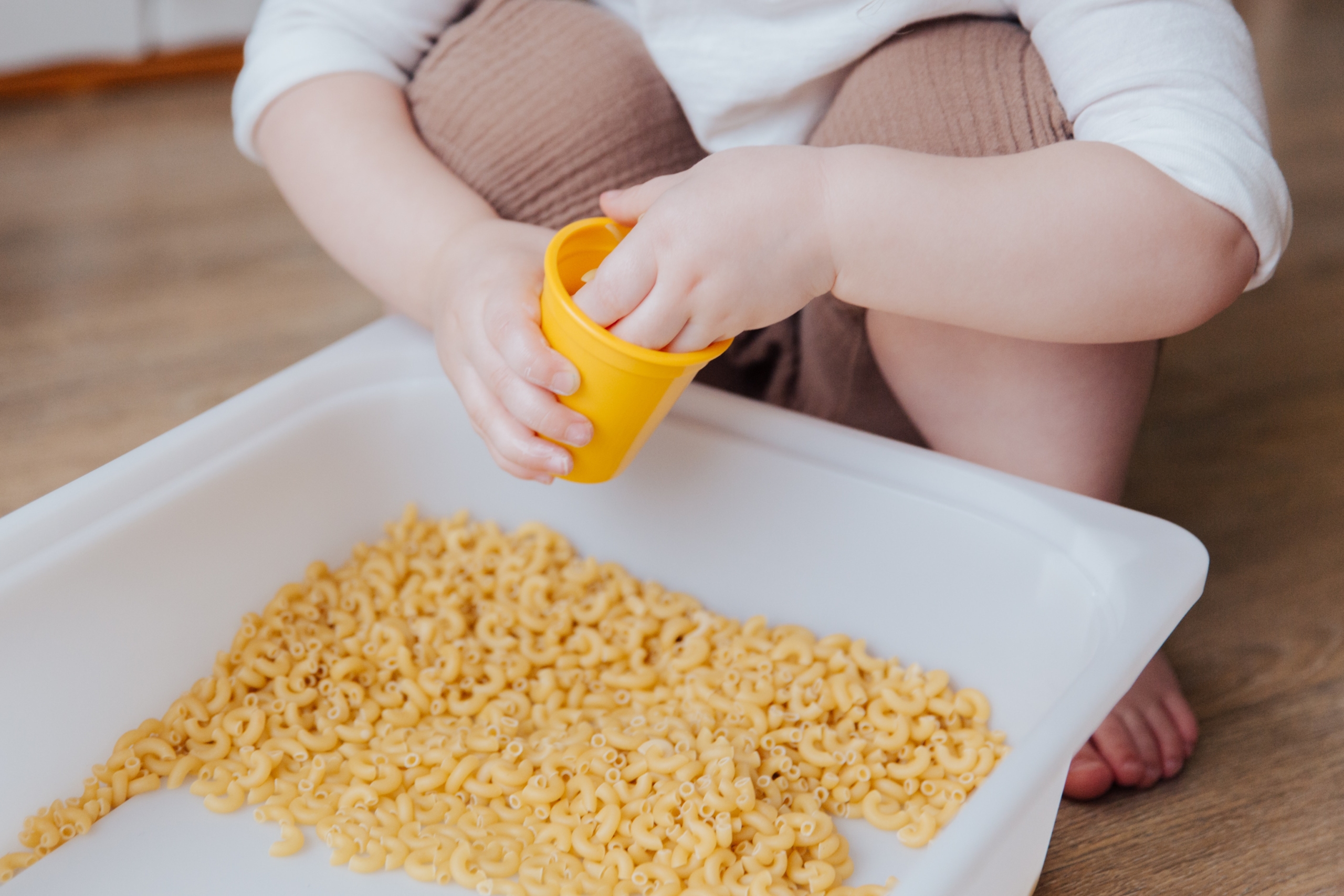
Fill a container with cooked spaghetti, raw beans, or rice. Use cups to fill and empty, hide sea creatures in it, and have fun! This activity helps improve fine motor control, hand-eye coordination, and sensory processing.
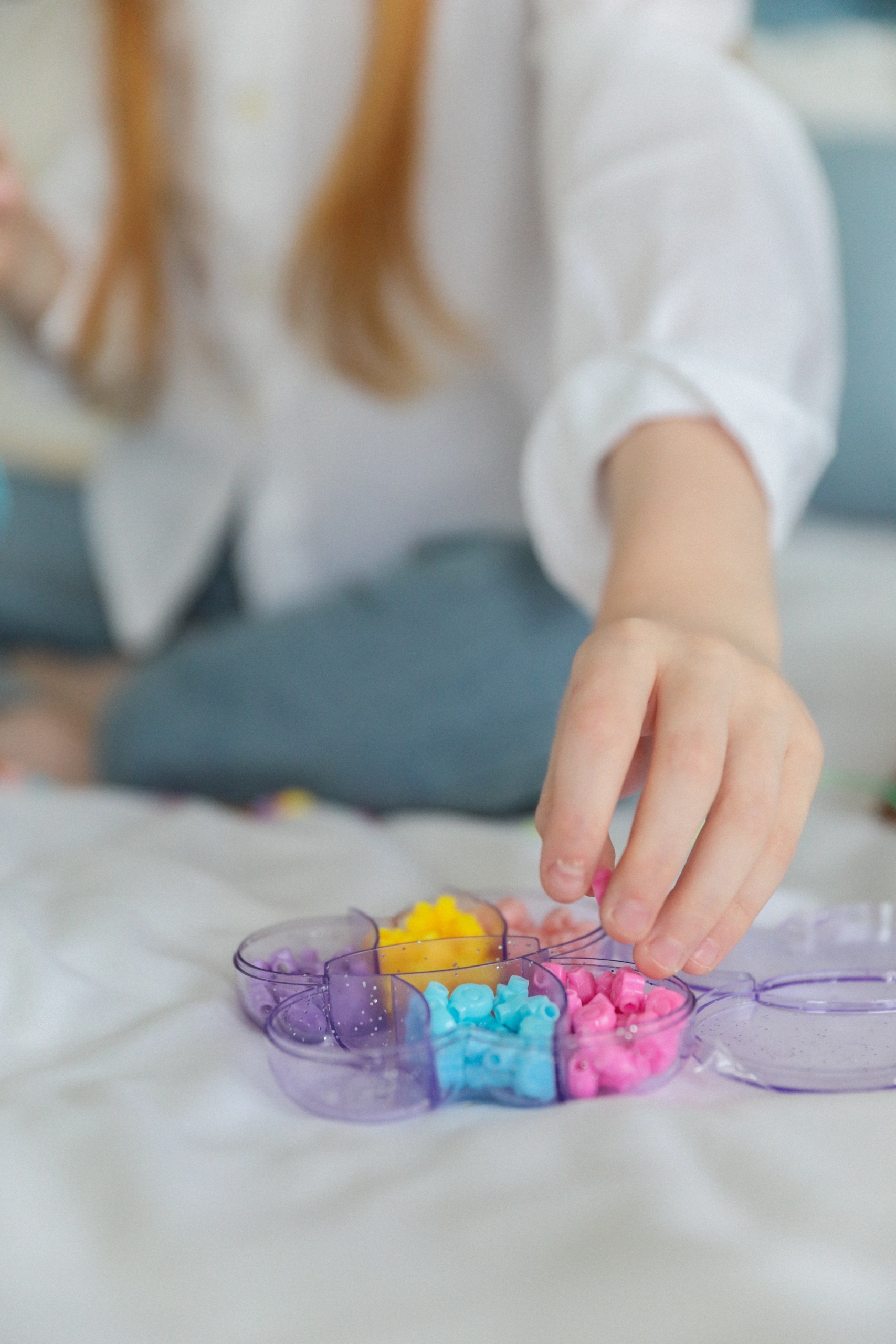
Beading is a fun and engaging way to improve fine motor skills in children. Children can string beads of different shapes and sizes onto a string or pipe cleaner, which can help to improve their dexterity, hand-eye coordination, and strength in the fingers and hands.

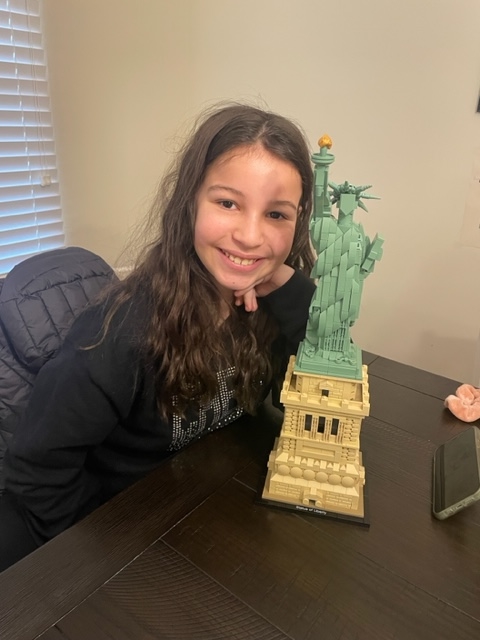
Building with legos or any other small building blocks can be a great way to improve fine motor skills in children. It requires children to use their fingers to pick up small blocks and place them in the correct spot, which can help to improve their dexterity, hand-eye coordination, and strength in the fingers and hands.

Outdoor games such as tag, capture the flag, and soccer, which involve running, jumping, and coordination.
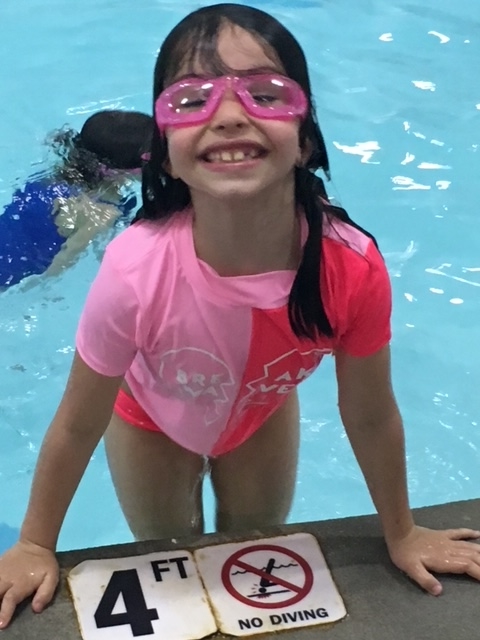
Swimming, which improves balance, coordination and endurance.
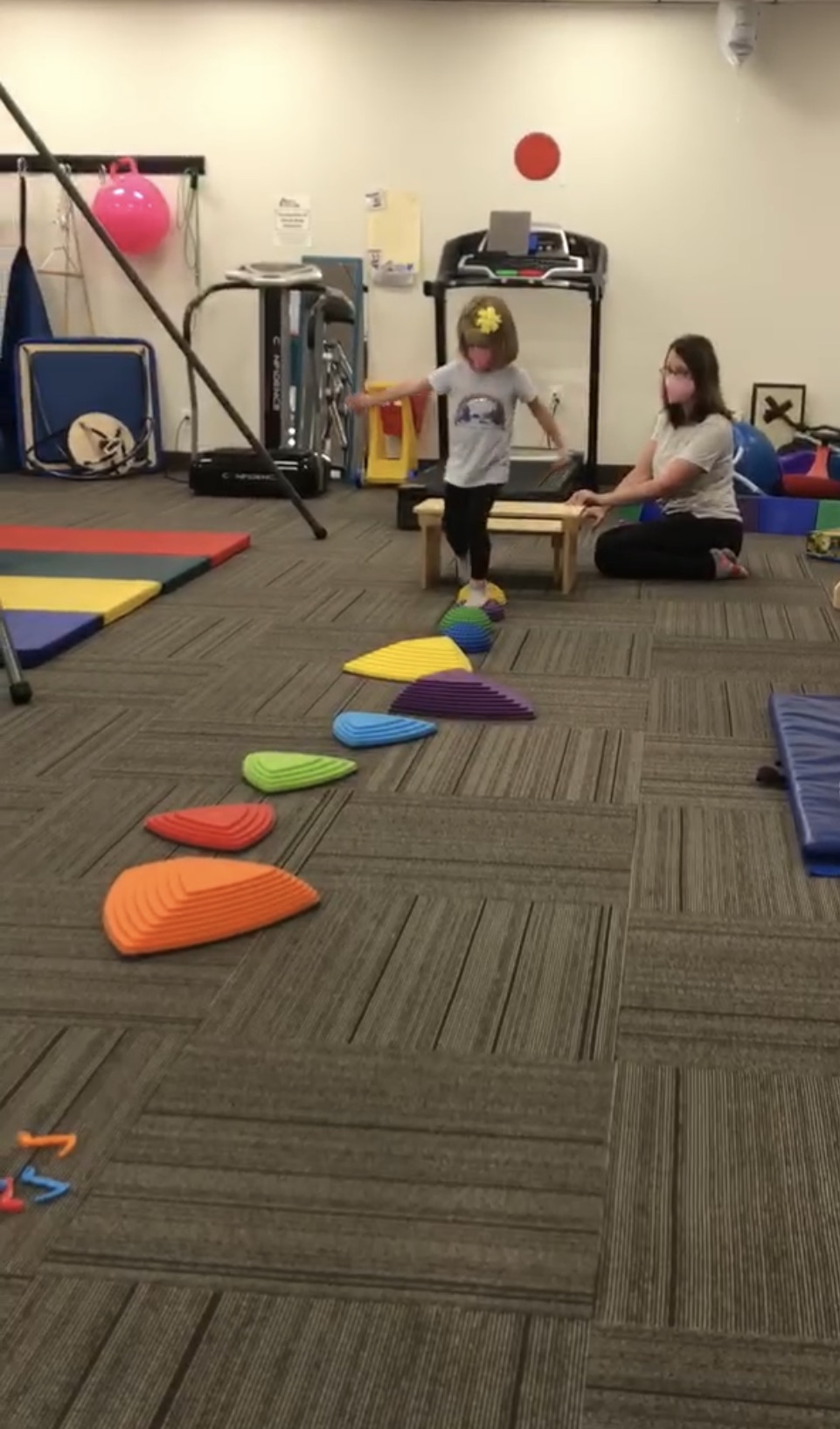
Obstacle courses, which involve crawling, jumping, and climbing, and help to develop strength and coordination.
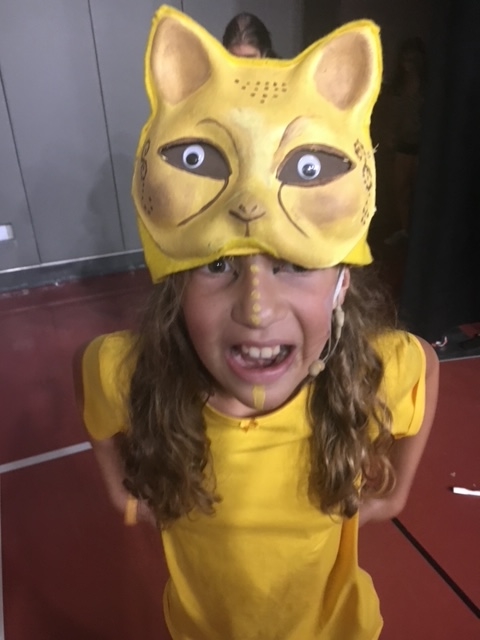
Dress up and role play, where children can act out different scenarios and characters using costumes and props.
Setting up a store, where children can pretend to be the cashier, customer, or salesperson, working on their math skills, social skills, and creativity.

Sand and water play, which can help children to develop their sense of touch and sense of proprioception (awareness of the position of their body in space)

Cooking and baking activities, which can help to develop children’s sense of smell, taste, and touch.
Remember to have fun, ask your child’s OT for advice on how to bring their therapy home into your daily routine!

Babies have just spent 9 months growing and developing in the womb, where they were just floating around!
As newborns, they are fully reliant on mom and dad to support where their bodies go and what they see, hear, touch and smell.
With practice, new experiences, and time, babies develop head control through a combination of increased muscle strength and coordination. As they grow, infants begin to control the movements of their head by strengthening the muscles in their neck, upper back, and throughout their bodies. They also learn to coordinate the movement of their head with their eyes, which allows them to fixate on objects and track movement. This stimulates the development of the vision system, which also develops as a result of movement experiences. Additionally, as babies spend time lying on their backs, lying on their stomachs, and even being carried, they have the opportunity to practice lifting and controlling their head movements.

Babies typically begin to hold their heads up by themselves around 3-4 months of age. This is a significant milestone in their development, as it indicates that they are gaining control over the muscles in their neck and upper back. However, it’s important to note that all babies develop at different rates, and some may start holding their heads up earlier or later than others. Some babies may be able to hold their heads up briefly as early as 2 months, while others may not be able to hold their heads up until they are 5 months old. It is important to also be mindful if a baby was born prematurely. We want to consider the skills of a baby who was born prematurely in comparison with their adjusted age and not just their chronological age.
It’s important to remember that skills will develop as babies have the opportunity to try out new skills. That means that babies need lots of time to experiment with movement! The best way to do that is on the floor on a blanket with both toys (consider black and white toys or cards for our youngest of babies) and also with us. Get down on the floor with baby to play and if there is a big brother or sister, have then get in on the action too. If you have barriers to getting down on the floor to play, you can do the same play activities on a couch where you can be sitting more comfortably.

Here are our Kid PT top 3 positions that can be helpful for babies to strengthen their necks:

If your baby is struggling to hold their head up during tummy time or prefers to look in one direction, it is best to seek out professional advice. At Kid PT, Dr. Joni always tells parents that when they come in for a free screening they will either learn how to help their child or they will get piece of mind that everything is ok. There is nothing to lose!
To learn more about the developmental process in the first year and understand what to expect as your little one learns to move, check out Dr. Joni’s free guide, The 6 Keys to Gross Motor Development In the First Year. The goal of this guide is to help parents find out when their baby just needs more time and when their baby may need some help to meet their milestones!
If your worries about your baby’s development are keeping you up at night (and we know how precious sleep is right now!), then we would like to invite you to come in for a Discovery Visit to meet with one of Kid PT’s physical therapists. At a Discovery Visit, we will talk about your concerns and make a look at your baby’s movement skills.
You can request for a free visit HERE.
Do you want to learn more about pediatric physical therapy and what it is. You can read more about it here. I know as a parent it can scary to take your baby to a new medical appointment. Rest assured that our visits are generally filled with smiles, giggles, and play. Babies have no idea they’re “working”, but just know they’re having fun. In fact, one of our top values at Kid PT is for the therapeutic process to be not just effective from a movement perspective, but for it to be as easy and positive as can be along the journey.
If you have any questions, we are here for you. You can call us at (908) 543-4390 or email Dr. Joni directly at joni@kidpt.com.
Just remember parents, you go this!


We all know by now that we should be eating at least five servings of fruits and vegetables each day. But knowing and doing are two different things, aren’t they? Sometimes it is just not easy to get them all in there. We are constantly tempted to fill up on convenience and junk food. If your family is anything like mine, they’d much rather fill up on a bag of chips or a bowl of rice or pasta instead of trying an apple or a plate of steamed broccoli. A little creativity and preparation can go a long way though! Here are a few ideas to “sneak” some extra vegetables and fruits in your family’s diet.
1. Start the day with a breakfast smoothie. All you have to do is throw some fruits, low-fat yogurt and ice in a blender. You may also want to add a scoop of protein powder in there for good measure. Just blend for a few seconds and you have the perfect breakfast ready to go. I like to sip mine in a thermal cup on the way to work. To make it even more appealing for your kids, use some frozen yogurt or a scoop of ice cream in the smoothie. They won’t believe that you are letting them have ice cream for breakfast.

2. Dried fruit makes an excellent snack any time of the day. Add some small cartons of raisins to your child’s lunch box, pack some yogurt-covered raisins in your husband’s briefcase and keep some trail mix sitting around for snacking. You can also add dried fruit to oatmeal and cereal in the morning. My family loves banana chips in their breakfast cereal.

3. Add some fruits and vegetables to your family’s sandwiches. You can add some banana, sliced apples or strawberry slices to a peanut butter sandwich. Top a turkey sandwich with lettuce, tomato, cucumber and anything else they will eat. You can even make a sub shop style vegetable sandwich by combining several different vegetables with some mayonnaise and cheese on bread.
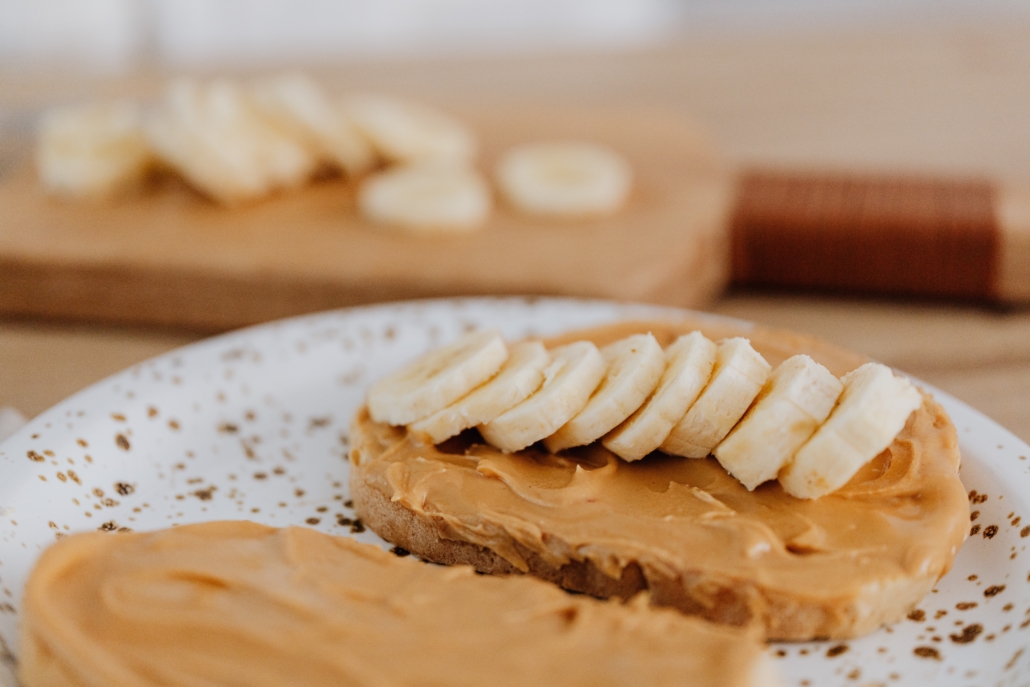
4. Have a salad bar at dinner. Set out a variety of chopped vegetables, some cheese and croutons as well as several choices of salad dressing along with the lettuce and let everybody create their own perfect salad.

5. Let them drink their fruits and vegetables. Keep an assortment of fruit and vegetable juices in the fridge and encourage everyone to drink them as a snack. Get creative. You could start “family cocktail hour” by pouring everybody a glass of his or her favorite juice over ice. Add some straws, cocktail umbrellas and sit together to talk about how everybody’s day went.

6. Try this for dessert. Put a small scoop of ice cream or frozen yogurt in a bowl and top it with lots of fresh or frozen fruit.

7. Offer fruits and vegetables as snacks. You can cut apples into slices and top them with peanut butter or cheese. Cube cheese and serve with grapes. Cut up some fresh veggies and serve them with ranch dip. And of course there’s ants on a log. Spread some cream cheese or peanut butter on the inside of a stick of celery and sprinkle raisins on it (wow, fruit and vegetable in one snack).
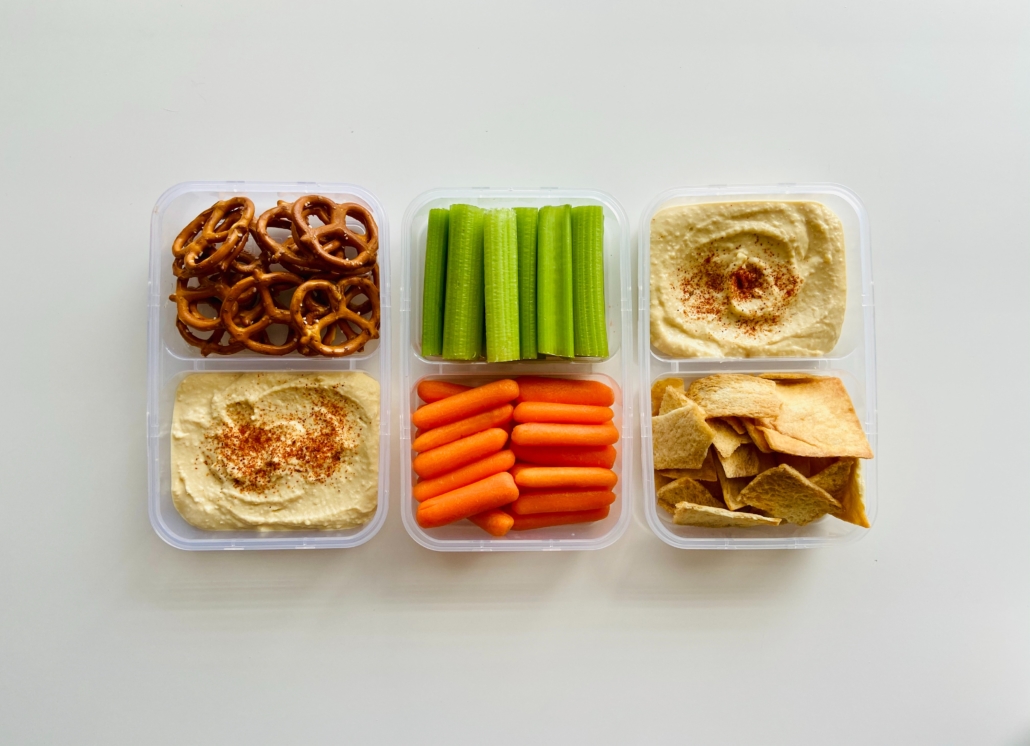
8. Try some new fruits and vegetables. Pick something exotic to get your family’s curiosity. With a little luck their curiosity will outweigh their initial apprehension to trying something new. You could try artichokes, plantains, papaya, mango, star fruit, or anything else you can find in the produce department of your local store.

9. Make a pot of vegetable soup or a stew that’s heavy on veggies and easy on the meat. Both of these make some great comfort food when the weather gets cold.

10. Start “My Veggie Day”. Each family member gets to pick a vegetable one day of the week.

Incorporate a few of these ideas and you will have everyone in your family eating more fruits and vegetables in no time!

Did you know that less than 25% of people keep their goals past the month of January?
So what does this mean for the rest of the 75% of the population?
Does that mean that we’re all unrealistic in our expectations…
…not disciplined enough,
…not motivated for the right reasons,
…unwilling to make the “right” sacrifices,
…or just plain lazy?
We need to stop that negative self talk NOW!!!
We may be easily tempted into accepting these explanations of our “failure” as truth. Especially since social media is constantly screaming how we are not enough without this product, that body, or those fad diets or trends.
Maybe the fact that the majority of the population is unable to follow through with their resolutions, speaks more to the ineffectiveness of resolutions rather than us. Maybe the concept of resolutions does not align with how we as humans are typically wired. Keeping goals and following through is a hard task for anyone, so what can you do to make this process easier? We encourage you to instead establish small changes in your ROUTINE rather than resolutions. How is establishing a routine different? Below are 5 tips to making realistic routine changes that will help you reach your goals.

This is so important to avoid burnout. If your goal is to exercise consistently, refrain from initially making a goal that reflects your ideal frequency, duration, and intensity. Instead, start with small increments of an exercise or activity that will slowly get you to that goal. This could include walking in the morning or after you get home from work, performing a short yoga flow routine on youtube, or even doing pushups before you get ready for work. The important part is that it starts to become your routine and then you can always progress the amount of time and intensity of the activity as it becomes an automatic part of your day.
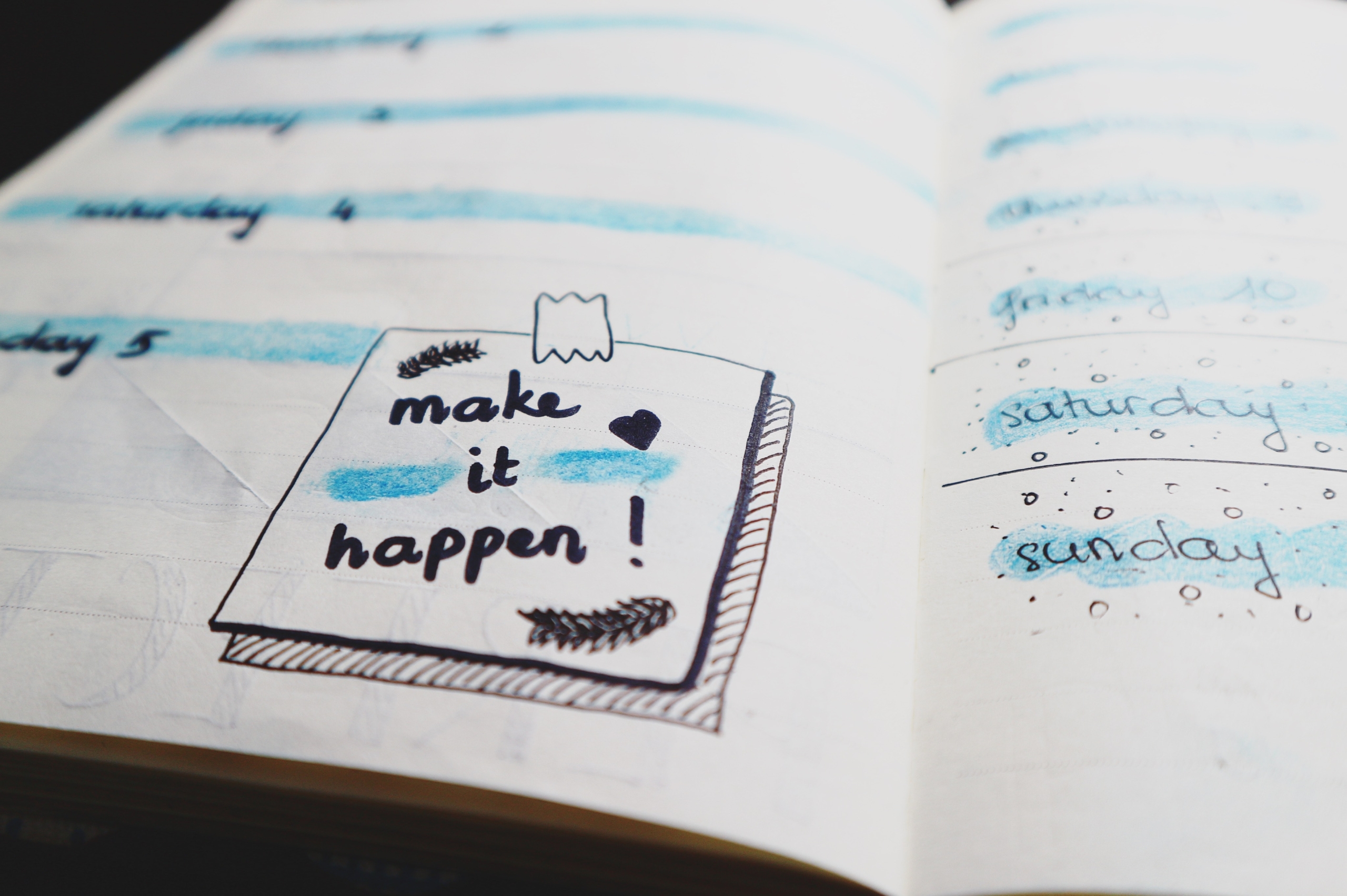
Barriers are anything that block you from performing your intended task. Some examples of barriers are relying on the presence of another individual to complete the task, only exercising in a gym, and only doing an act of self care when everyone around you is content and happy. The more steps or conditions needed to complete a task, the less likely you are to follow through. There is not a problem with performing your routine with other people or going to the gym to exercise, but always have a back up plan and follow through even if the conditions aren’t ideal.

Combine it with something that gives you joy. This will be different for each individual person. This may be listening to a beloved audiobook or podcast, sharing the activity with a family member or friend, or making sure to give yourself a reasonable reward each time you perform the task. Even if the actual task is daunting and overwhelming, you will still have something to look forward to, which will help to reduce your avoidance of following through.
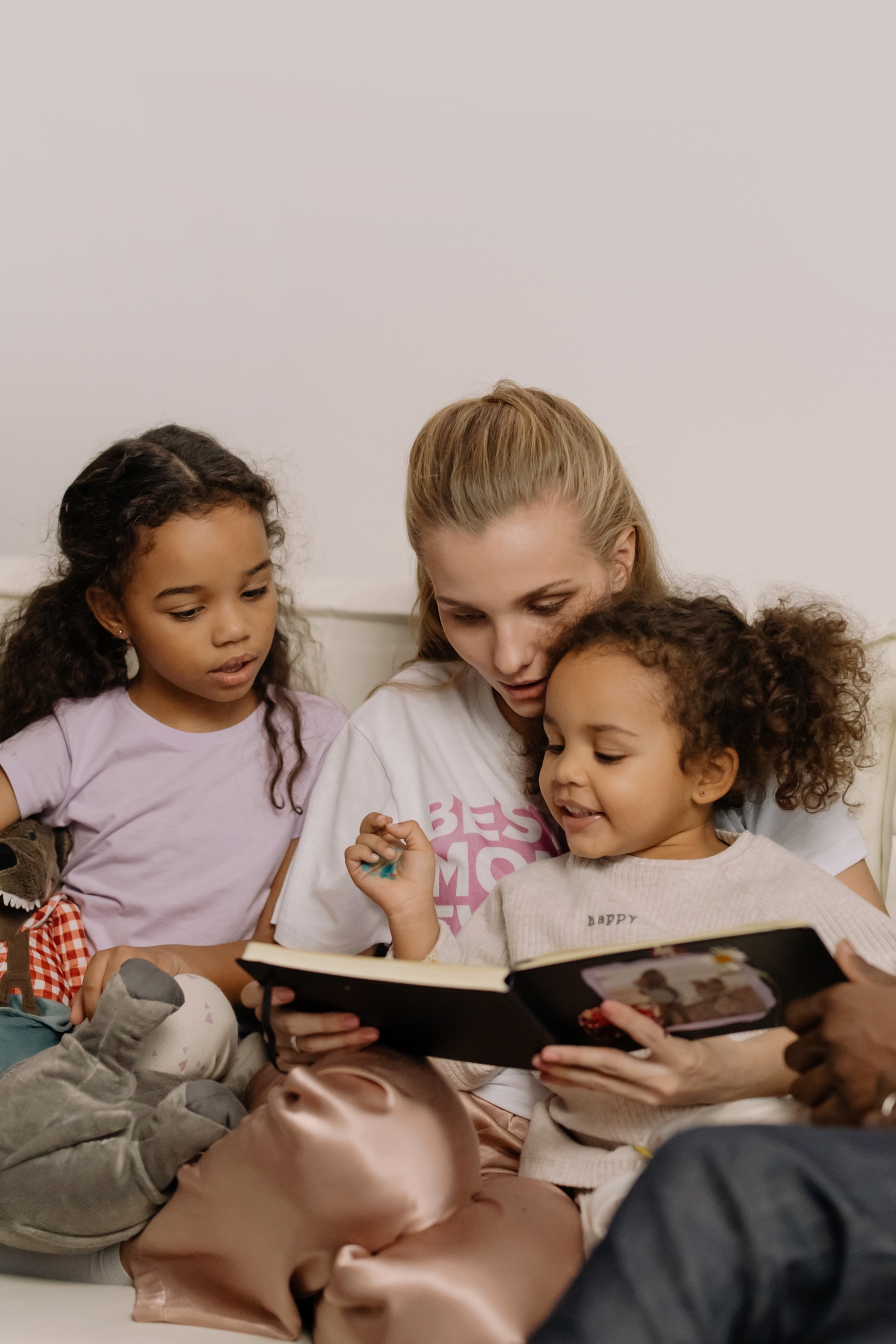
Pair it with activities already in your routine. Take advantage of all the routines you have already established throughout your day. By coupling your new activity with something you already automatically do in your day, it will boost your ability to follow through. An example of this is if your goal is to spend more time with your child, perform fun activities at a consistent time in your day that you are already with your child. For example, have an ice cream date or do a puzzle or play on the playground with your child after driving them home from school, after dinner, or before the bedtime routine.
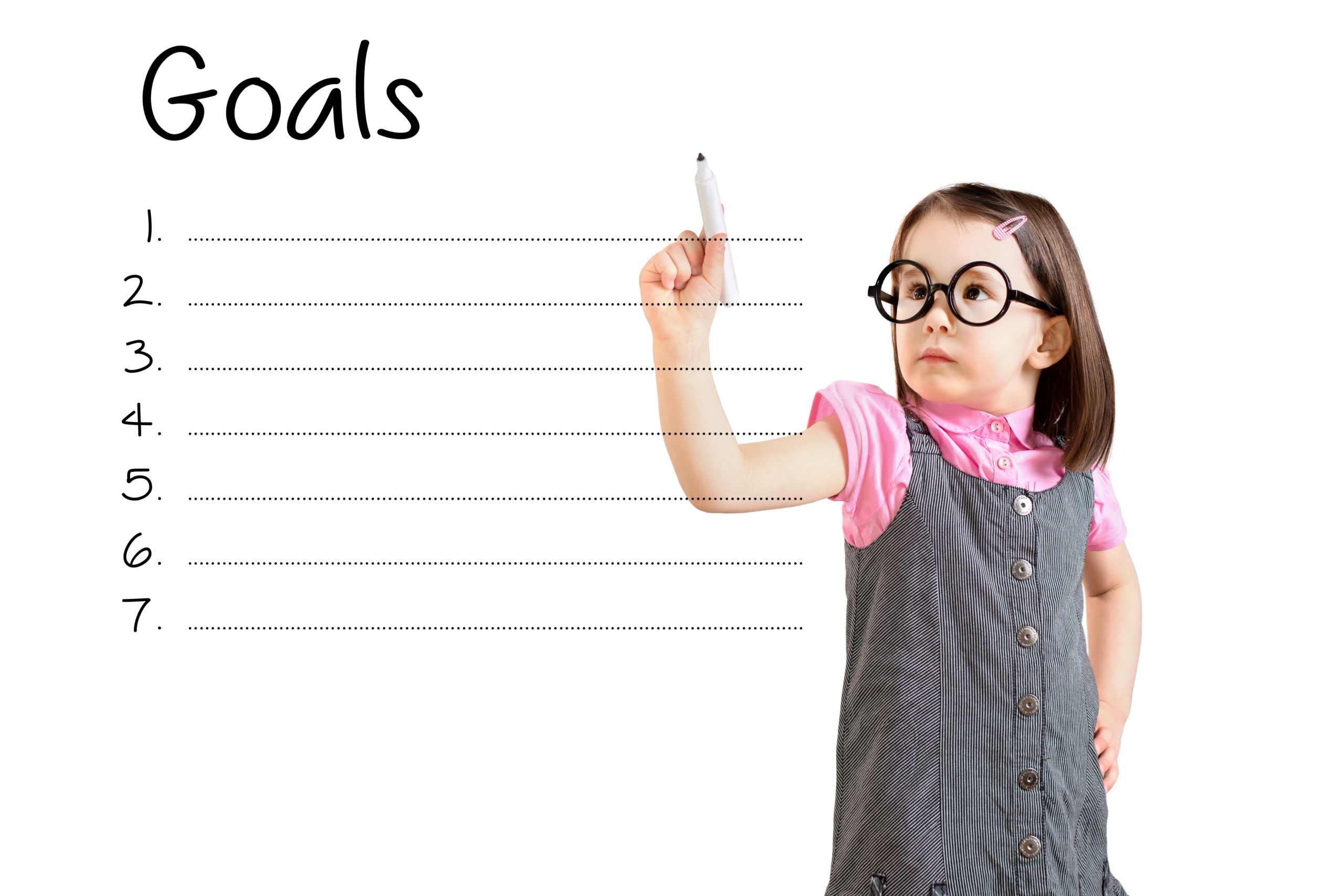
If you intend on making lifestyle changes that last longer than a few months or a year, then it has to be reasonably sustainable. It is important to choose goals that allow you to function in a normal daily routine without significant stress and sacrifice as this can be unhealthy for your body. Make sure to allow yourself a balance of productivity, connection with loved ones, adventure, self care, and rest.
If you’ve already ditched the resolution, its not too late to make a change. Think new routines, not resolutions and try some of the above tips to put them into action!
